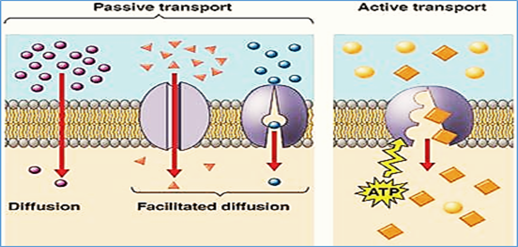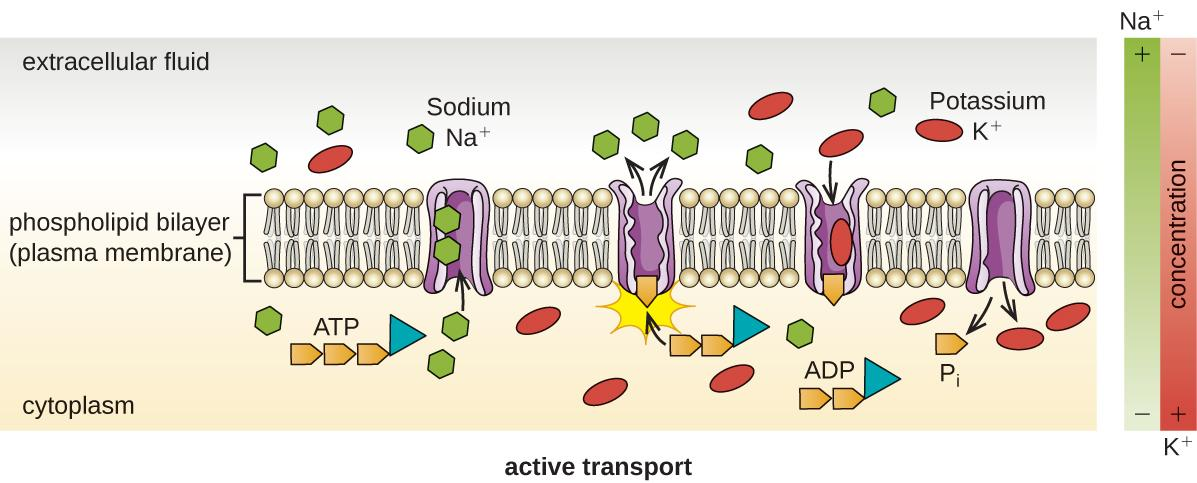How Cell Transport Maintains Balance and Supports Life
Cell transport is the process through which substances move in and out of cells. It ensures that nutrients enter cells and wastes are removed, maintaining balance within the cell. Below, we discuss the types of cell transport, how transport across cell membrane takes place, why it is essential for cells, and how it supports overall organism health. We will also examine cell transport function in plants, explore the cell transport mechanism in detail, and learn about the transport function of key cell structures.
Why is Cell Transport Important?
Cell transport helps maintain the right balance of nutrients, ions, and water inside a cell. This balance supports cellular activities like metabolism, growth, and reproduction. Without efficient transport across cell membrane, cells cannot function properly, leading to imbalances that may affect the entire organism. Thus, it answers the question, “What is the function of the transport system in a cell?”—it helps to maintain stable conditions essential for survival.
What are the 7 Functions of the Cell Membrane?
A cell membrane not only allows substances to enter or exit but also performs several other vital roles:
Protection – Acts as a barrier shielding the cell’s internal components.
Selective Permeability – Chooses which substances can pass through.
Communication – Receives signals from the environment or other cells.
Recognition – Helps identify cells as self or foreign.
Adhesion – Assists in binding cells to each other or surfaces.
Structure – Maintains cell shape.
Transport Regulation – Monitors the movement of substances, ensuring a balanced internal environment.
Types of Cell Transport
Broadly, there are two main types of cell transport mechanisms: passive transport and active transport. Within these, there are specific processes that govern the movement of substances.

1. Passive Transport
Passive transport does not require cellular energy (ATP). Instead, molecules move down their concentration gradient (from areas of high concentration to areas of low concentration). The main forms are:
Simple Diffusion: Small molecules like oxygen and carbon dioxide pass directly through the membrane.
Facilitated Diffusion: Specific proteins (permeases) in the membrane help larger or polar molecules cross.
Osmosis: Movement of water molecules from a region of higher water concentration to a lower one through a semipermeable membrane.
To see a simple overview, you could create a transport across cell membrane flow chart showing these steps: molecules on one side of the membrane → pass through membrane proteins (or phospholipid bilayer) → reach equilibrium inside the cell.
2. Active Transport
Active transport uses cellular energy (ATP) to move molecules or ions against their concentration gradient (from lower to higher concentration). This process often involves specialised proteins known as pumps.

Key Variations Include:
Primary Active Transport: Energy is derived directly from ATP. An example is the sodium-potassium pump in animal cells.
Secondary Active Transport (Coupled Transport): One ion moves down its gradient to provide the energy for another ion or molecule to move up its gradient. This can be antiport (opposite directions) or symport (same direction).
These mechanisms explain “What is the transport function?”—they work together to regulate and maintain the internal balance of essential substances in cells.
Cell Transport Function in Plants
Plants rely heavily on cell transport to absorb nutrients and water from the soil and distribute them to various parts of the plant:
Root Hair Cells: They use active transport to absorb mineral ions from the soil, even when concentrations in the soil are lower than inside the roots.
Xylem and Phloem: Movement of water (through xylem) and sugars (through phloem) depends on concentration gradients and osmotic pressures.
Transfer Cells: What are the functions of transfer cells? These specialised cells have numerous infoldings in their cell membranes, increasing surface area to facilitate rapid transport of solutes (e.g. in sugar transport during phloem loading).
Role of Organelles in Cell Transport
Although the cell membrane is the major player, other organelles contribute to cell transport function in cell membrane:
Endoplasmic Reticulum: Often considered the cell’s internal transport system, it helps in synthesising and transporting proteins (rough ER) and lipids (smooth ER).
Golgi Apparatus: Packages and modifies proteins and lipids, sending them to their destinations via vesicles.
These systems collectively answer “What is the function of the transport system in a cell?” by showing how substances move to the right place at the right time to maintain efficient cell activity.
Quick Quiz (With Answers)
1. Question: Which type of transport requires ATP?
Answer: Active transport.
2. Question: What drives molecules in passive transport?
Answer: Concentration gradient (moving from high to low concentration).
3. Question: Name an organelle involved in internal transport within the cell.
Answer: The endoplasmic reticulum.
4. Question: How do transfer cells support plant transport?
Answer: By increasing membrane surface area to speed up the movement of solutes.


FAQs on Cell Transport and Its Types: Complete Guide
1. What is transport across the cell membrane?
Transport across the cell membrane refers to the movement of substances like ions, nutrients, and waste products into and out of a cell. This process is regulated by the selectively permeable plasma membrane, which controls what enters and leaves, ensuring the cell maintains internal stability or homeostasis. For more details on this process, you can explore cell transport and its types.
2. What are the main types of transport across a cell membrane?
The two primary types of transport across a cell membrane are:
- Passive Transport: This type does not require the cell to expend metabolic energy. Substances move down their concentration gradient (from high to low concentration). Examples include simple diffusion, osmosis, and facilitated diffusion.
- Active Transport: This process requires energy, usually in the form of ATP, to move substances against their concentration gradient (from low to high concentration). Examples include the sodium-potassium pump and endocytosis.
3. What is the fundamental difference between active and passive transport?
The fundamental difference lies in energy usage and the direction of movement. Passive transport does not require cellular energy (ATP) as molecules move along the concentration gradient. In contrast, active transport requires ATP to power the movement of molecules against their concentration gradient. You can learn more about the difference between active and passive transport here.
4. How does facilitated diffusion differ from simple diffusion?
While both are types of passive transport, the key difference is the involvement of membrane proteins. In simple diffusion, small, nonpolar molecules (like O₂ and CO₂) pass directly through the lipid bilayer. In facilitated diffusion, larger or charged molecules (like glucose and ions) require the help of specific channel or carrier proteins to cross the membrane.
5. Why is energy in the form of ATP essential for active transport?
Energy from ATP is essential for active transport because it powers the movement of substances against their natural concentration gradient (i.e., from an area of lower concentration to an area of higher concentration). This is an energetically unfavourable process, similar to pushing an object uphill, and requires an external energy source to change the shape of transport proteins and move the molecules across the membrane.
6. What role do proteins play in membrane transport?
Proteins are crucial for membrane transport, especially for substances that cannot easily pass through the lipid bilayer. They function as:
- Channel Proteins: These form pores that allow specific ions like Na⁺, K⁺, and Ca²⁺ to pass through the membrane.
- Carrier Proteins: These proteins bind to specific molecules, such as glucose or amino acids, change their shape, and transport the molecule to the other side of the membrane. This is a key part of both facilitated diffusion and active transport.
7. What happens to a cell if its transport mechanisms fail?
If a cell's transport mechanisms fail, it cannot maintain homeostasis and will likely die. The cell would be unable to take in essential nutrients and ions, leading to starvation. It would also fail to expel toxic waste products, causing them to accumulate to lethal levels. Furthermore, failure of ion pumps would disrupt the cell's membrane potential, which is critical for nerve and muscle function.
8. What is the importance of the sodium-potassium pump in animal cells?
The sodium-potassium pump is a vital example of active transport with several critical functions. It actively pumps three sodium ions (Na⁺) out of the cell for every two potassium ions (K⁺) it pumps in. This process is important for:
- Maintaining the electrochemical gradient necessary for nerve impulses.
- Regulating cell volume to prevent swelling or shrinking.
- Driving the transport of other solutes, like glucose, into the cell.
You can find a detailed explanation of the sodium-potassium pump here.
9. How do very large particles, like bacteria, enter a cell?
Very large particles enter a cell through a process called endocytosis, a form of active transport. The cell membrane engulfs the external particle by wrapping around it, forming a vesicle that then pinches off and moves into the cytoplasm. When a solid particle is engulfed, the process is called phagocytosis (cell eating), and when fluid is taken in, it is called pinocytosis (cell drinking).










